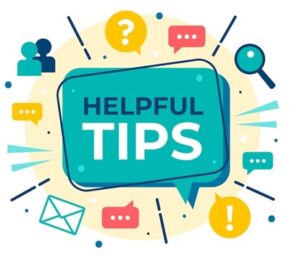Medical crises don’t just affect the body. They involve our thoughts, emotions, soul, and brain, but our brain leads the way. Entering a crisis sparks distinct parts of the brain. The first reaction comes from the amygdala. While the name amygdala isn’t important to remember, it is important to understand that the part of our brain (amygdala) that controls emotions moves to the forefront in the initial stages of a crisis.
 The amygdala sits up and listens to what is happening around us. Sparked by a threat, the amygdala is prepared to do its job to protect and move us toward survival.
The amygdala sits up and listens to what is happening around us. Sparked by a threat, the amygdala is prepared to do its job to protect and move us toward survival.
Think of the caveman. He leaves his cave to find food. Spear in hand, he tromps through the wild and hears a rustling. The amygdala moves to alert. Senses become heightened, the heart beats faster, and adrenalin pumps, preparing the caveman to react. Out of the brush comes a mountain lion. Even an experienced caveman is no match for a mountain lion. “Should I fight, run, or stop, all the while hoping the mountain lion doesn’t see me?” Thinking through and assessing options are good strategies, but the caveman can’t take the time to assess the pros and cons of each option. When in danger or scared, the amygdala is the first responder. It reacts faster than we can think.
If we could slow time down to examine the underlying process, we would see three main ways the amygdala reacts. As noted in How Your Brain and Body Deal with Treatment post, fight, flight, and flee are common reactions to a medical crisis.
- Fight One way the amygdala reacts is to fight: take the spear and use it to try to stop the mountain lion.
- Flight Other times, the amygdala shouts, “Run for your life!” Flight is meant literally, for the caveman’s life is in the balance, and the amygdala decides the caveman must flee to live.
- Freeze Sometimes, the amygdala urges him to freeze. The body and brain stop; the caveman feels paralyzed.
While we can imagine the probable endings depending on the caveman’s choice, our outcomes aren’t as clear-cut or as predictable when we are faced with a crisis. But our brains go through the same mechanisms as the caveman’s. Whichever path we follow, the brain’s reactions have only one intention: to protect. We’ll look at each of these reactions and how they translate into action at the diagnosis stage of a health event.
Fight
Shock quickly turned into action. I immediately started asking hundreds of questions. –MM
 Just as the caveman grabs a spear and prepares to attack the mountain lion, we engage in our battle. We flex our muscles, gather our resources, and yell an internal “Charge!” Off we go to conquer the beast with our 21st-century spear. Our present-day spear takes the form of gathering information, organizing resources, and making decisions.
Just as the caveman grabs a spear and prepares to attack the mountain lion, we engage in our battle. We flex our muscles, gather our resources, and yell an internal “Charge!” Off we go to conquer the beast with our 21st-century spear. Our present-day spear takes the form of gathering information, organizing resources, and making decisions.
I obsessed with the idea that a solution MUST be possible. I spent hours contacting companies, NIH, and physicians to ask about trials that may cross paths with our son’s rare disease. I questioned every decision and moments leading up to his sudden onset of symptoms trying to pinpoint what could have happened. I longed to try to understand the reasons it happened and how to fix it, believing that if I tried hard enough, there must be a solution. –RR
I researched online and networked with everyone I could think of. –SH
 I developed a love-hate relationship with Dr. Google. I wanted to read as much as I could about my disease, but when I read something I didn’t want to know, I cursed Dr. Google. –AA
I developed a love-hate relationship with Dr. Google. I wanted to read as much as I could about my disease, but when I read something I didn’t want to know, I cursed Dr. Google. –AA
It was as if I was on a mission. I made doctor appointments and began to figure out what I needed to do next and how. –CS
After the shock, disbelief, and fear settled down, I moved into warrior mode: coordinate the medical team and get the surgery done ASAP. –RGW
I couldn’t believe my friend was diagnosed with breast cancer at 45 years old. I quickly accepted it and became a warrior; certain we would fight this together and win. –LF
I went into fix-it mode. –KW
Tips for Fight Mode
 When in fight mode, we tend to focus more on doing than feeling. Sometimes we don’t want to feel, but it is important to be aware of the emotions so they don’t build up inside, only to later erupt when you don’t want them to.
When in fight mode, we tend to focus more on doing than feeling. Sometimes we don’t want to feel, but it is important to be aware of the emotions so they don’t build up inside, only to later erupt when you don’t want them to.
Workbook Chapter 3 Our Brains Lead the Way
Tips for Fight Mode
- Make a list of two or three people that you designate as the ones you want to ask you how you are doing. Ask them to use the word doing rather than feeling to honor your fight mode (at least for now). Be specific about how frequently you want to be asked; you can always increase it or decrease it later. Ask them if they’re willing to take on this “job” for you. List these people below.
____________________________________________
____________________________________________
____________________________________________
Fight mode places us on high alert and makes it easy to miss important pieces of information. We think we heard it all, but we didn’t. In fight mode, as in crisis in general, our memories aren’t as dependable as usual.
- Audio record your medical visits.
- Bring someone along with you to important medical appointments as a second pair of ears, or to take notes, so you can just listen.
It is important to be careful with whom we spend time.
- Stay away from people who ask prying questions. People who pry create a feeling of rage and generate a feeling as if they are using your crisis for gossip.
- Avoid know-it-alls. When we are in fight mode, we don’t want to hear dissenting opinions, because it distracts us from our well-thought-out plan.
Keeping a routine is important in fight mode, because when following routines the brain doesn’t have to think and make decisions about ordinary tasks. Maintaining routines preserves energy for creating plans and gathering needed information.
- Look for two or three routines from your daily life you can deliberately keep during the challenging period of diagnosis.
____________________________ ______________________________
____________________________ ______________________________
Fight mode takes energy. It’s important to occasionally distract yourself and let your system settle so you’re not further taxing your health.
- Create a list of five mind-distracting activities that fit your specific health situation. Ideas include work/volunteer, if possible; exercise; social interaction (sports, games); crossword or jigsaw puzzles; gardening; playing with children; cooking; repetitive prayer; or singing.
____________________________ ____________________________ ________________________________
____________________________ ____________________________
Flight
Much of the time, I was in denial of the nature of my 41-year-old daughter’s cancer. I just couldn’t face it. –JG
 For the caveman, flight is literally running away from the mountain lion in an effort to save his life. As the mountain lion gets closer and closer, adrenaline propels him to run faster to try to escape. When we or someone we love encounters a medical crisis, we feel the imaginary jaws clamp down on our necks, squeezing the life that we once knew out of us. Running away through denial, refusing treatment, overfocusing on tasks in life, or seeking momentary escape allows us to feel some control over a situation that causes us to feel out of control.
For the caveman, flight is literally running away from the mountain lion in an effort to save his life. As the mountain lion gets closer and closer, adrenaline propels him to run faster to try to escape. When we or someone we love encounters a medical crisis, we feel the imaginary jaws clamp down on our necks, squeezing the life that we once knew out of us. Running away through denial, refusing treatment, overfocusing on tasks in life, or seeking momentary escape allows us to feel some control over a situation that causes us to feel out of control.
It’s official. I am overwhelmed and freaked out. The enormity of what lies ahead and what is going on in my body has hit me. I want to run away. –CS
Tips for Flight Mode
 When in flight mode, we tend to be overwhelmed by emotions that make us want to escape. Thinking about the details and gathering information can increase our distress, so it is important to enlist others to help with these tasks.
When in flight mode, we tend to be overwhelmed by emotions that make us want to escape. Thinking about the details and gathering information can increase our distress, so it is important to enlist others to help with these tasks.
If your response is primarily flight, consider building a team around you to support your need to escape yet help you keep track of valuable information.
Workbook Chapter 3 Our Brains Lead the Way
Tips for Flight Mode
- Make a list of two or three friends/family that you would like to have on your support team. Choosing someone with a medical background is helpful, but not crucial. Meet with them to talk about what you want them to do.
____________________________ ___________________________
____________________________ ___________________________
- As a group, decide who will go to which medical appointments. Record them on a shared calendar (Google calendar, Outlook.com, etc.) You can also share this calendar with others if you choose, such as family, to keep them up-to-date.
- Audio record your medical visits so all team members can hear what has been said and stay up-to-date.
- Have the person who accompanies you to medical appointments take notes, particularly the main facts you need to know, so you can refer to them when you feel ready. After a medical appointment, the team member is to ask if now is a good time to tell you three pieces of information. If you hear one piece and that’s all you can handle, tell them that’s all you can listen to right now. It helps to add that you are feeling overwhelmed because that gives the helper clarity as to why they need to stop. The helpers need to know these “rules”.
When in flight mode, grounding activities are good. Grounding activities are those that keep us more present in the here and now — hence, less likely to take flight. Ways to be more grounded when in this mode include engaging one or more of the senses (taste, touch, smell, sight, sound).
Workbook Chapter 3 Our Brains Lead the Way
Activities
 Listen to music
Listen to music- Eat enjoyable foods
- Drink warm/cold beverages
- Smell scents that bring positive memories. Put a whole citrus fruit in the freezer and when frozen, take it out and smell it. The aroma of the citrus can be grounding. Some people use aromatherapy diffusers.
- Be in nature, which is full of sights, smells, sounds, and touch
- Spend time with pets
- Lie under a weighted blanket
- Wear clothes that are comfortable and have a texture you like
Some actions are particularly unhelpful to take when in flight mode.
 Don’t listen to the medical visit recordings unless you have moved into fight mode, because hearing the information in medical jargon can increase anxiety.
Don’t listen to the medical visit recordings unless you have moved into fight mode, because hearing the information in medical jargon can increase anxiety.- Don’t visit Dr. Google.
Freeze
I didn’t really hear what I was being told. –LVB
 Freezing manifests as a surreal experience. The caveman tries to shrink his body behind the bush so as not to be seen by the mountain lion, even though he knows his human scent will be detected by the beast. There is no hiding, but when in freeze mode, we try. In freeze mode, it is hard to believe what is happening. Life around us feels unreal. It feels like time is suspended.
Freezing manifests as a surreal experience. The caveman tries to shrink his body behind the bush so as not to be seen by the mountain lion, even though he knows his human scent will be detected by the beast. There is no hiding, but when in freeze mode, we try. In freeze mode, it is hard to believe what is happening. Life around us feels unreal. It feels like time is suspended.
I feel like I move from one room to another, never walking down the hall. Just boom, I am in this other space. A space that is unfamiliar. The walls are fluid, not creating a defined space. I could run into a wall, and it would push further out, only to bounce me back into this amorphous space. There is no furniture, the walls are swirled with pale colors, and the ceiling is beyond my vision. –CS
I found myself a doddering, weak, shuffling soul and was shocked. I felt as though I would collapse from within. Not fall over — just crumble within. –BK
Tips for Freeze Mode
When in freeze mode, much of the world around and inside of us feels overwhelming. We want time to stop. We don’t want a lot of input. We want peace. We want stillness. We want calmness. Unfortunately, in a medical crisis, these desires are difficult to attain.
Workbook Chapter 3 Our Brains Lead the Way
Tips for Freeze Mode
Although freeze and flight modes are different from one another, they have similar features that prompt some of the same suggestions.
- Make a list of two or three friends/family that you would like to have on your support team. Choosing someone with a medical background is helpful, but not crucial. Meet together to talk about what you want them to do.
____________________________ ______________________________
____________________________ ______________________________
- As a group, decide who will go to which medical appointments. Record them on a shared calendar (Google calendar, Outlook.com, etc.). You can also share this calendar with others, such as family, to keep them up-to-date.
- Audio record your medical visits so all team members can hear what has been said and stay up-to-date.
- Have the person who accompanies you to medical appointments take notes, particularly the main facts you need to know, so you can refer to them when you feel ready. After a medical appointment, the team member is to ask if now is a good time to tell you three pieces of information. If you hear one piece and that’s all you can handle, tell them that’s all you can listen to right now. Let them know that you are feeling overwhelmed because that gives the helper clarity as to why they need to stop. The helpers need to know these “rules” ahead of time.
To help unlock the freeze reaction, touch or movement are essential.
 Wrap yourself in a cozy blanket. Some have found weighted blankets particularly helpful.
Wrap yourself in a cozy blanket. Some have found weighted blankets particularly helpful.- Be hugged by someone you trust and love
- Have your hair washed
- Take a walk in nature
- Get massaged
- Dance
- Sit with a pet
- Ride a bike
- Dig/plant in the dirt
- Fish, as casting and reeling movements are calming
1. Throughout the stages of a medical crisis and more, we move back and forth between the three modes: fight, flight, and freeze. Most of us, though, tend to have a “go-to” approach. Which is your primary one?
______________________________
2. Our relationships with family, friends and colleagues vary. Identifying what type of support you need from specific people allows you to let them know. When you are in your primary mode of reaction (fight, flight, or freeze), what kind of support do you need? My primary mode is ____________. When I am in this mode, I need…
|
I need this kind of support |
From this person |
|
|
|
|
|
|
|
|
|
|
|
|
3. When your stress is heightened, what mode (fight, flight, freeze) do you move into as a reaction? ________________________mode. When I am in this mode, I need…
|
I need this kind of support |
From this person |
|
|
|
|
|
|
|
|
|
|
|
|
Featured image courtesy of Milad Fakurian on Unsplash.

0 Comments